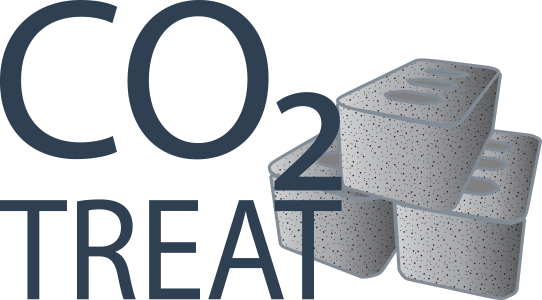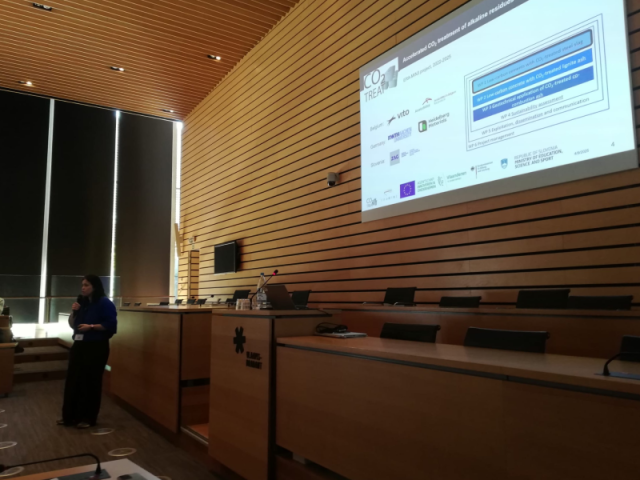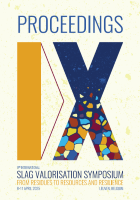On April 9, Liesbeth contributed to the “Mineral Carbonisation / Carbon Sequestration I" session with her presentation titled "Can Dynamic Mineral Carbonation Be Used to Make Low Carbon Binders from Steel Slags?". She introduced the CO2Treat project in her talk, highlighting its innovative contribution to reducing industrial CO₂ emissions by developing dynamic mineral carbonation processes. Her slides covered key findings such as BOF characterisation, carbonation kinetics, FTIR analysis, and an outlook on upscaling the dynamic mineral carbonation process. If you are interested in learning more, please download the presentation below.
The findings were also published in the conference proceedings, co-authored by Horckmans and her colleagues, titled "Can Dynamic Mineral Carbonation Be Used to Make Low Carbon Binders from Steel Slags?" The paper outlines the pressing need for alternative SCMs as conventional sources like blast furnace slag and fly ash diminish due to industrial decarbonisation. It presents dynamic carbonation as a promising method to convert challenging residues into viable materials for cement, addressing both material performance and environmental impact.
We sincerely thank Liesbeth Horckmans for representing the CO2TREAT project at this prestigious symposium and contributing to the global dialogue on sustainable resource use and CO2 reduction in the cement and steel sectors.


